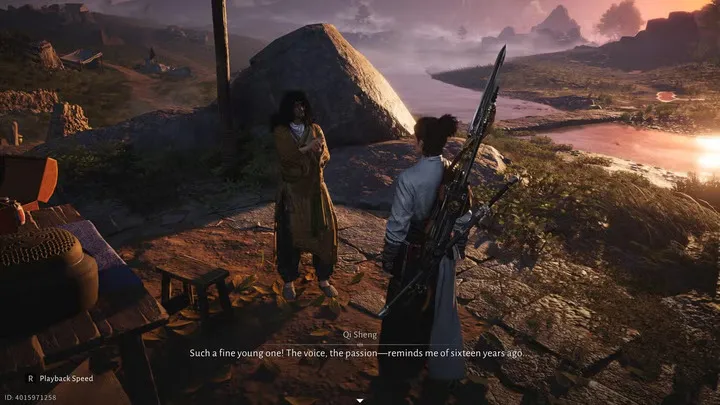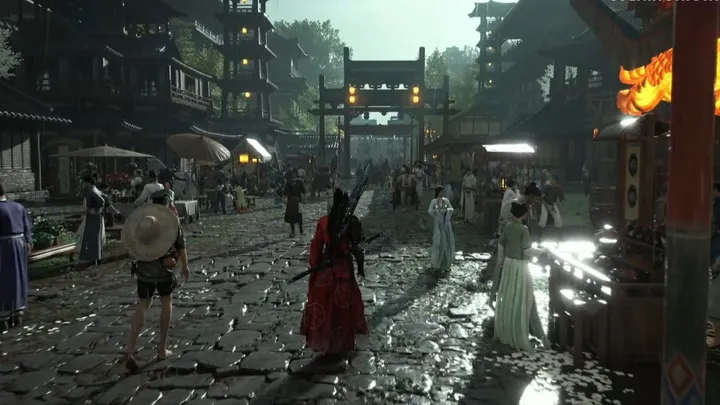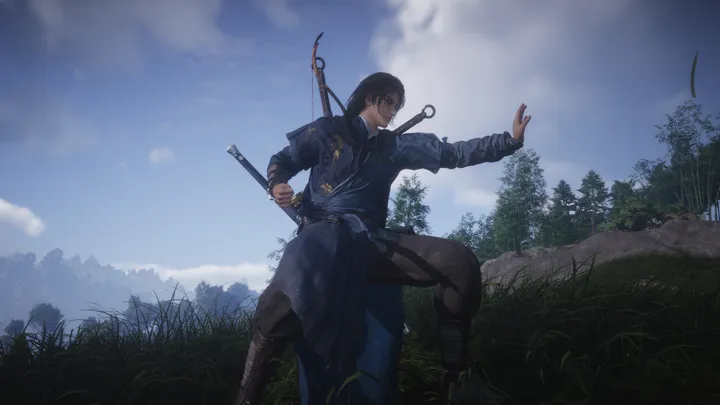Where Winds Meet hides one of its most complex combat systems beneath the surface: Wind-Chi Combat Synergy. This mechanic governs how your internal Chi, wind manipulation abilities, stance transitions, and directional timing interact to create fluid, high-level combat flow. Instead of offering surface-level tips, this guide focuses entirely on the advanced “how to” behind Wind-Chi Synergy—how the system works internally, why timing matters, and how to execute advanced applications like wind layering, stance-preserving Chi flow, and Wind-Chi Cancels. By the end, you’ll understand not just what to do, but how to read animations, how the game interprets your inputs, and how to apply this system in boss fights and PvP duels.

1. Understanding the Foundation of Wind-Chi Flow
Wind-Chi Synergy begins with the fundamental concept of Chi states—open, circulating, and locked. The game rarely explains this, yet the state of your Chi determines how your wind abilities behave, how quickly you transition stances, and how responsive your attacks feel. Fighting with locked Chi is the most common reason players fail to execute advanced techniques.
When Chi is open, your character’s movements flow naturally. Stance swaps become smoother, and wind techniques gain slight pressure effects. When Chi circulates, you gain light-attack speed but lose transition fluidity. Locked Chi stiffens all your mechanics.
To master this system, you must first learn how Chi opens and closes. Chi opens through rhythmic movement aligned with your stance’s breathing animation. Understanding this foundation ensures all advanced techniques remain available.
2. Opening Chi Through Micro-Movement
Micro-movements are short directional taps performed at precise moments in your character’s breathing rhythm. These taps sync your motion with internal Chi cycles. If you tap too early or too late, the game considers your flow “broken,” locking Chi instantly.
Proper micro-movement begins by observing the small shoulder rise and fall in your idle stance. Tap a movement direction at the peak of the inhale, then lightly adjust at the exhale. When done correctly, small wind particles form around your legs, signaling open Chi.
Most beginners make the mistake of mashing keys in hopes of accelerating Chi flow. The secret, instead, is timing. Micro-movements guide the game into recognizing your intention to align wind manipulation with breathing, enabling the rest of the system.
3. Transitioning Stances Without Breaking Chi
Each stance in Where Winds Meet—Sword, Spear, Fist, and Windblade—has unique Chi thresholds. Swapping stances too early breaks Chi flow; swapping too late resets synergy entirely. The key is knowing the three “open frames” at the end of every idle stance animation.

If you transition stances during these frames, Chi remains open, and you gain a temporary Wind-Bonus Effect. This bonus lasts three seconds and strengthens aspects of your next action, such as faster dash recovery, added wind damage, or stagger resistance.
Learning to identify the open frames is crucial. Watch for a subtle visual cue—a tiny posture relaxation—before the idle animation loops. By syncing transitions to this window, you maintain synergy and prepare the foundation for more advanced techniques.
4. Layering Wind Manipulation Into Attacks
Wind layering integrates wind pressure into basic attacks without triggering full ability cooldowns. Instead of activating wind abilities outright, you apply partial wind energy at key animation frames to subtly manipulate enemy positioning.
Each stance interacts with wind differently. Sword stance draws wind inward, pulling enemies closer. Spear stance pushes wind outward, creating distance. Fist stance forms circular currents ideal for crowd control. Understanding these directional properties allows you to sculpt battlefield space.
Wind layering is performed by lightly tapping your wind ability input immediately after starting an attack. The game interprets this as “partial wind release,” enhancing the attack without interrupting the combo. This technique increases control, allowing you to reposition enemies strategically.
5. Perfecting Wind-Chi Cancels
Wind-Chi Cancels are the signature advanced mechanic in Wind-Chi Synergy. These cancels allow you to interrupt your own attack animation during specific frames, reducing recovery time and enabling fluid, extended combos.
To perform a Wind-Chi Cancel, begin an attack and wait until roughly 70 to 80 percent of the animation has completed. At that moment, release a minimal wind burst and follow it with a micro-movement tap. If done correctly, your character resets instantly into open-Chi stance.
This technique is frame-tight, meaning only a small window exists for success. Chi must be open for the cancel to work. Circulating or locked Chi interrupts the mechanic entirely. Once mastered, however, Wind-Chi Cancels allow you to chain attacks seamlessly.
6. Extending I-Frames With Wind-Shift
Wind-Shift is a special movement mechanic that enhances your dodge with extended invincibility frames (i-frames). When Wind-Chi Synergy is active, dodges last longer and allow you to pass through attacks normally unavoidable.

To activate Wind-Shift, release a small amount of Chi immediately before dodging. This links your dodge to your wind flow and signals the system to increase your i-frame duration by up to forty percent. Timing is crucial—too early and nothing happens; too late and your dodge behaves normally.
Wind-Shift is powerful in boss fights or PvP duels where enemy attacks have deceptive hitboxes. Mastery of this mechanic provides unmatched movement safety.
7. Executing the Three-Layer Wind Combo
The Three-Layer Wind Combo is the pinnacle of Wind-Chi Synergy. It consists of a stance swap during open frames, followed by a wind-layered basic attack, and ending with a Wind-Chi Cancel. Executed properly, this combo maintains momentum and significantly boosts damage output.
The sequence requires precise timing, as each action must occur before the previous one fully completes. The synergy between stance speed, wind manipulation, and Chi rhythm makes this combo feel fluid and powerful once mastered.
Players often struggle initially because they try forcing speed rather than rhythm. Each step must “fit” into the flow. After sufficient practice, the motions blend into a single continuous movement.
8. Applying Wind-Chi Synergy in Boss Fights
Bosses in Where Winds Meet have wide swings, delayed slams, and unpredictable patterns. Wind-Chi Synergy allows you to mitigate these threats through spacing, wind pressure manipulation, and extended evasion windows.
Bosses also have susceptibility frames—moments where wind pressure can stagger or destabilize them. These usually occur during the inhale phase before an attack. Recognizing these frames allows you to apply wind-layered strikes to interrupt or weaken boss attacks.
Wind-Shift helps avoid sweeping AoE attacks, and Wind-Chi Cancels allow you to maintain pressure without overcommitting. These techniques create a style of combat that feels controlled yet dynamic.
9. Using Wind-Chi Synergy in PvP Duels
PvP duels emphasize timing and unpredictability. Human opponents react differently from AI, making wind manipulation even more valuable. Wind layering disrupts spacing, Cancels blur your intentions, and Wind-Shift provides survival during dangerous exchanges.
In PvP, your goal is to break the opponent’s rhythm. Wind manipulation is perfect for this. By adjusting wind pressure subtly, you create unexpected spacing changes that cause enemies to miss attacks or miscalculate ranges.
Stance transitions also play a key role. A well-timed stance change creates mental pressure by resetting the flow of the fight. Combined with Wind-Shift, it allows you to safely reposition and counterattack.
10. Daily Practice Routine to Maintain Wind-Chi Precision
Wind-Chi Synergy is a timing-based skill that deteriorates without consistent practice. A structured routine helps preserve your rhythm, ensuring that stance transitions, cancels, and wind layering remain sharp.

Begin with micro-movement rhythm drills. Focus solely on syncing your taps with your breathing animation. Next, work on stance transitions, practicing during open-frame windows. Afterward, dedicate time to light wind layering and then advanced Cancels.
A practical routine:
• 2 minutes micro-movement
• 3 minutes stance transitions
• 3 minutes wind layering
• 5 minutes Wind-Chi Cancels
• 5 minutes full synergy loop
Players who follow this routine for even one week notice dramatic improvements in mobility, consistency, and control.
Conclusion
Wind-Chi Combat Synergy in Where Winds Meet is an intricate system combining wind manipulation, Chi rhythm, stance timing, animation reading, and spatial control. By learning how to open Chi through micro-movement, transition stances correctly, layer wind pressure into attacks, execute Wind-Chi Cancels, and extend i-frames with Wind-Shift, you unlock a combat style that is both fluid and powerful. Mastering these mechanics transforms the game, allowing you to fight with precision, creativity, and deep understanding of the engine’s internal logic.

















